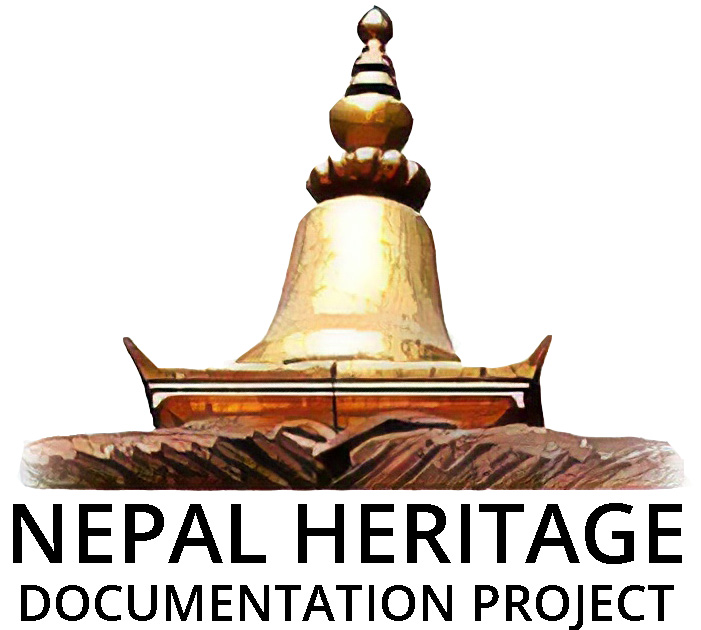Āḥjudyaḥ Bāhāḥ, Bhaktapur
Curated by Thomas Schrom
Āḥjudyaḥ Bāhāḥ is a god-house (dyaḥchẽ) and not a proper bāhāḥ. The enshrined Dīpaṅkara technically belongs to Pasu Bāhāḥ (BKT0220). Two inscriptions refer to Dīpaṅkara as Ajājudeva (lit. ancestral deity) and he is therefore believed to be the most senior Dīpaṅkara among the five Dīpaṅkaras of Bhaktapur. Local residents revere Dīpaṅkara as their ancestral deity (āḥjudyaḥ). People from neighboring towns like Thimi, Nagadeśa and Boḍe worship the Dīpaṅkara before organizing a major feast. Buddhist monks come from as far as Manang, Mustang and Solukhumbu to worship Dīpaṅkara.
During the annual Samyak Mahādāna and Pañjrāṃ festivals the Āḥjudyaḥ Dīpaṅkara leads the procession of the five Dīpaṅkaras. During these festivals, the other Dīpaṅkaras must bow down to him.
This three-story building faces south and features a tower (pula) above its jhĩgaṭī tile roof. The courtyard contains five caityas, a Gaṇeśa shrine, and a statue of Umāmaheśvara. One of the caityas (BKT0210-019) was built in 1630 and the statue of Umāmaheśvara is said to date from the 13th-14th century. Among the three toraṇas outside the main sanctum, the central one contains a statue of Akṣobhya flanked by Prajñāpāramitā and Ṣaḍakṣarī Lokeśvara. The other two toraṇas contain statues of Akṣobhya flanked by Sāriputra and Maudagalyāyana, two of the Buddha’s closest disciples.
The date of the bāhāḥ's original construction is not known. The earliest mention of Āḥjudyaḥ Bāhāḥ appears in a loan deed (tamasuka) of 1392 issued during the reign of King Jayasthiti Malla. The bāhāḥ was reconstructed in 1923 and at that time Dīpaṅkara was shifted from the first floor to the ground floor. Āḥjudyaḥ Bāhāḥ was again restored in the early 1980s with funds from the German Government.
For more information about Āḥjudyaḥ Bāhāḥ please visit DANAM.
